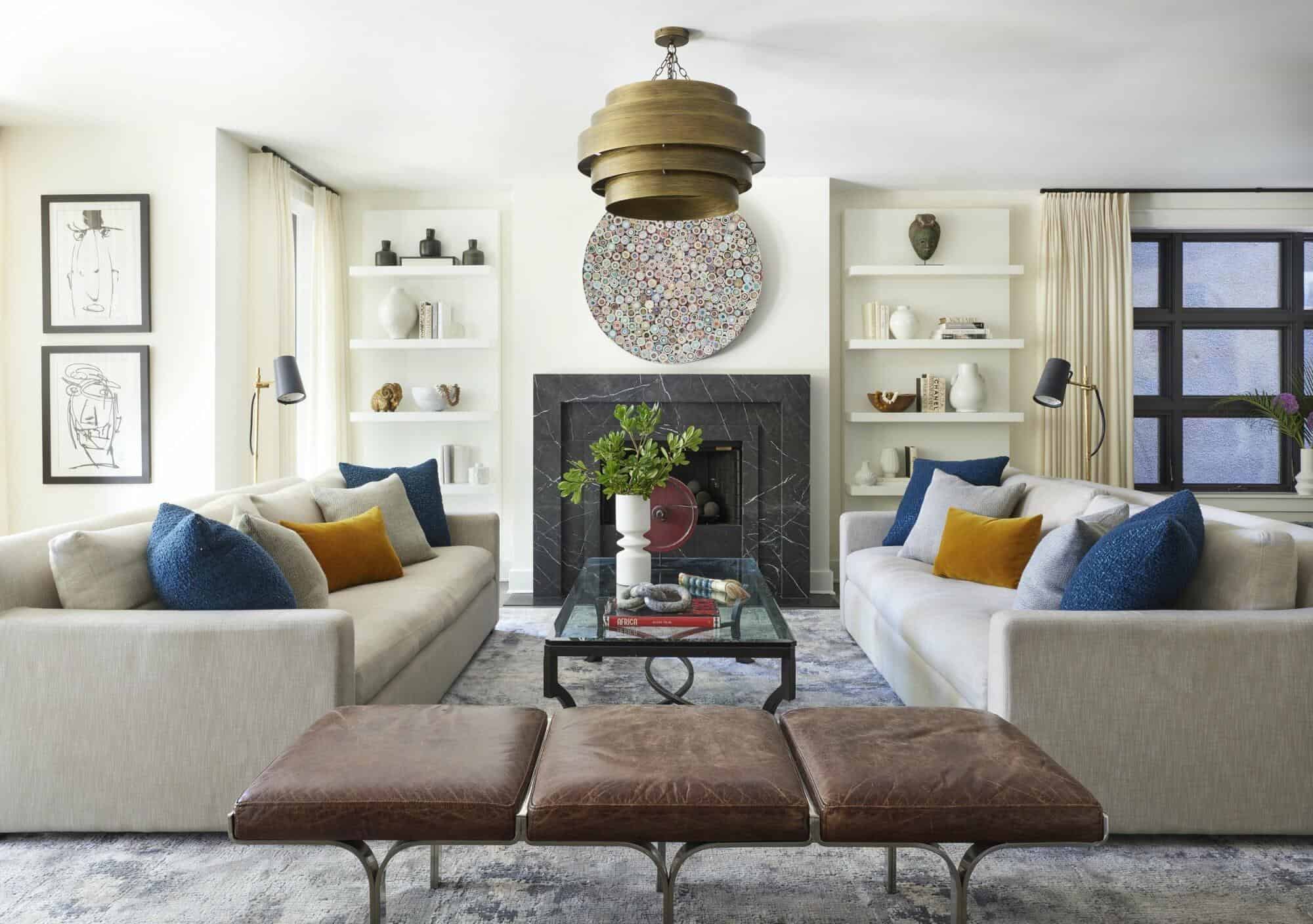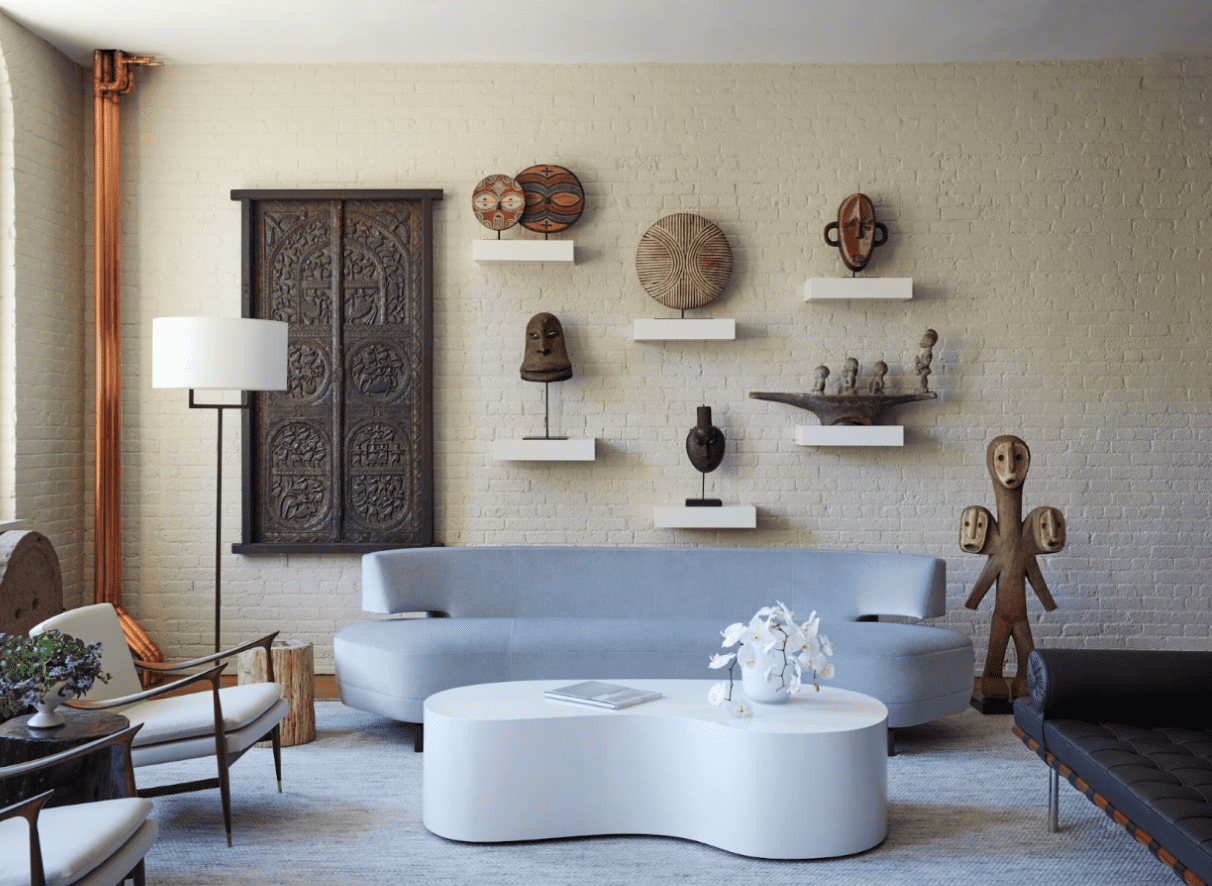
A Designer’s Guide to Sourcing Vintage

As much as I love the feeling of stepping into a favorite showroom or furniture shop, there’s an extra special kind of rush to be had when shopping for vintage items and antiques. A storied rug, a hand-carved chair with a stamp that dates back decades, or a beloved piece from across the globe can each add character-filled personality to any project — which is one of many reasons I love to infuse each of my projects with doses of vintage charm.
Vintage sourcing can get a reputation for being too tough and too expensive — and while it may require a bit more elbow grease and a bit more spend at times (but not always!), the benefits pay for themselves. Here, I’m sharing all you need to know about sourcing and designing with vintage pieces and antiques.

What qualifies as antique vs. vintage?
Lots of people use these words interchangeably, but “antique” typically refers to an item that is 100 years old or older, while “vintage” usually means an item is 20–100 years old (give or take!). In short, vintage items are much younger than antiques — and both have their place in my designs, and even the younger items can still bring so much character. (For example, while 50 years is certainly young in my opinion (wink), that’s still plenty of time for these pieces to develop a storied look full of history; you don’t always need an antique for that deeply treasured uniqueness and history.)
What are the benefits of sourcing vintage pieces and antiques?
How long do you have? I’ll boil it down to just a few key points:
-
They tell a story — and knowing your pieces had a life before you can help breathe new air and energy into a space.
-
It’s environmentally friendly to “reuse” pieces, especially when giving them new purpose.
-
It’s often sophisticated and trend-proof!
-
You’ll find yourself with unique pieces never seen anywhere else.

Where should I add vintage pieces in my home?
There’s not a right or wrong area of the home to add pieces with history — but it’s certainly true that some items may be preferred to be purchased brand new. For example, some upholstered furniture gets so much wear and tear that it’s best when fresh (springs and cushions have a shelf life!). There are, however, ways around this… Sometimes I like to take the vintage frame of a piece, then have cushions restuffed or reupholstered. This is where the rumor becomes true, though: this often is a more expensive route than buying new (but sometimes it’s really worth it).
Unless you’re an antiques dealer, I’d stick to an 80/20 rule: 80% new furnishings, and 20% vintage or antique.
Where should you begin when adding vintage and antiques?
While I’m a big fan of large pieces of furniture full of charm, sometimes the best additions (and oftentimes the most cost-effective ones) are through accents and accessories. Begin by adding found pieces that speak to you — they can be as simple as a vase, leather-bound journal, or a salvaged pendant light.

How can you tell if a found item is authentically vintage or antique?
The fastest way to determine if a piece of furniture is vintage is to determine if it is handmade or machine made. I first look at the side of the drawers for a casegood, or any area that holds pieces of wood together. If the side of the drawer has evenly spaced and perfect “dovetails,” then the piece is generally machine made. If the “dovetails” are irregularly shaped, then it typically means the piece was made by hand. Handmade furniture does not have uniform construction!
You can also look thoroughly for labels or stamps or manufacturing tags. Furniture makers often list their names, location, and year of production. I once bought a house in Chicago from the late 1800s that had a claw foot tub in it. I had the tub reglazed, and when the vendor came to pick it up, we saw the plant name and the date it was made on the underside of the tub: L. Wolff Manufacturing, October 28, 1899. How cool is that?
The last piece of advice I can give is that if you find a piece and you are uncertain if it is vintage, get it appraised before you strip it, refurbish it, or paint it. Its value will diminish if you do alter it from its original condition.

What should I do with vintage pieces in my home?
Have fun with them! Older, found pieces add life, history, meaning, and energy to any space. There’s no right or wrong way to enjoy them!
I’m convinced… Now where should I look?
Here’s a list of just a few of my favorite places to source high-quality, beautiful pieces from the past:
-
Parisian brocantes (of course!)
amy kartheiser design
home
about
services
portfolio
press
contact
Copyright © 2025 Amy Kartheiser Design | Website design by the la.rue creative studio